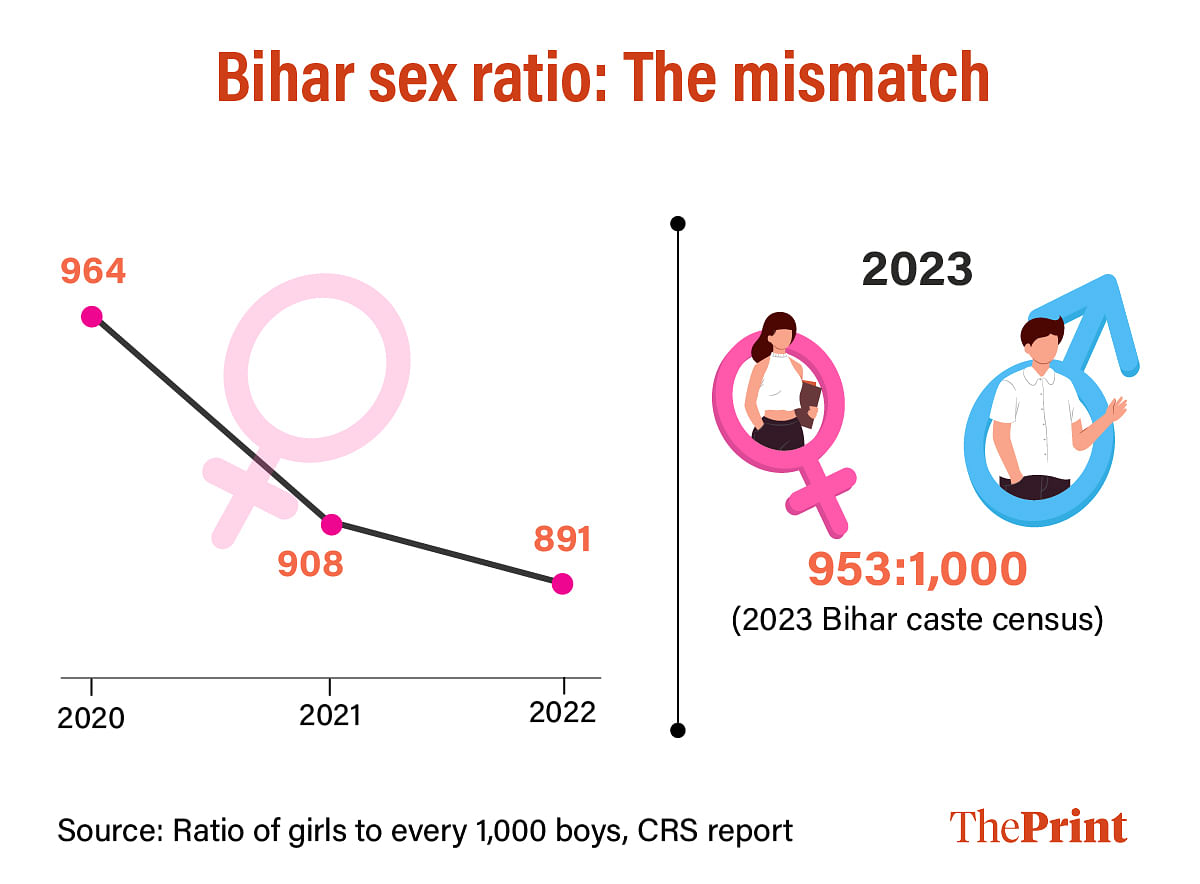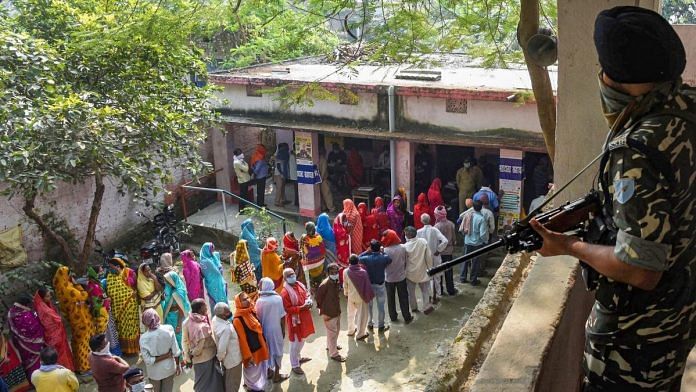Patna: Battling outrage and shock over the latest Civil Registration System (CRS) Report that shows an alarming sex ratio in Bihar in 2022—the poorest in the country—the state has now dismissed the data as erroneous.
Chief Secretary Amrit Lal Meena told ThePrint, “There appears to be an error in this data because the sex ratio of Bihar has gone up from 918 in 2011 to 953 in 2023 (caste census data). Caste census data is more authentic as it’s based on actual count.”
The CRS is overseen by the Office of the Registrar General under the Ministry of Home Affairs. It is India’s essential record-keeping framework, documenting births, deaths, infant mortality, and stillbirths to ensure a continuous and permanent record of vital events.
Meena’s reaction came soon after the CRS data was released in the first week of June, according to which, Bihar recorded the lowest sex ratio at birth (SRB) in the country—just 891 girls for every 1,000 boys in 2022. According to the report, this troubling decline has been consistent over the past three years, dropping from 964 in 2020 to 908 in 2021, and now 891 in 2022.
But if one were to believe the caste census, this ratio inexplicably improved to 953 girls per 1,000 boys in 2023, when looked at alongside CRS data of preceding years.
Chief secretary Meena says the sex ratio, across all age groups, was never so poor, in fact, the 2025 electoral data shows a rise from 892:1,000 in 2019 to 912:1,000. “Considering the different data samples, including the electorate and caste census, the sex ratio across all age groups should not be this drastically low.”

Nevertheless, there are many who are concerned about the skewed ratio thrown up in the CRS report.
For the past two decades, women voters have been central to political promises and social reform efforts in Bihar, particularly in policies like the liquor ban and the Jeevika initiative. The state heads to polls later this year.
“If these (CRS) statistics are accurate, they point to something deeply sinister—possibly female infanticide,” said a senior civil servant, speaking on condition of anonymity.
Sudha Varghese, one of Bihar’s leading feminist voices and a longtime advocate for the Musahar community, believes there is something missing and differs significantly from her observations over the past 50 years.
“I was surprised to read the news. I am unsure if it truly reflects the reality. Even within the Musahar community, instances of sex determination have declined,” she told ThePrint.
She emphasised the need to wait for the next census for a more comprehensive understanding. “There may have been some miscalculations, or flaws in data collection.”
Also read: After Ladli Behna & Ladki Bahin pass the poll test, BJP’s Ladli Laxmi scheme is on the way to Bihar
What does the CRS report say?
The 2022 CRS Report, compiled from Annual Reports of States and Union Territories, presents key data from 1 January to 31 December, 2022. According to the report’s findings, Bihar recorded the lowest sex ratio at birth (SRB) in the country, with just 891 girls born for every 1,000 boys, followed by Maharashtra (906), Telangana (907), Haryana (909), and Uttarakhand (910). In contrast, Nagaland had the highest SRB at 1,068, followed by Arunachal Pradesh (1,036), Ladakh (1,027), Meghalaya (972), and Kerala (971).
In Bihar, multiple meetings were conducted at the state, district, and block levels to assess the progress of vital statistics and address challenges in the online registration of births and deaths. A total of 4,522 inspections of registration units were carried out across 38 districts, with the highest number recorded in Gaya (364), followed by West Champaran (332). Additionally, 4,768 inspections were conducted at Birth & Death Registration Units linked to health institutions as part of a special drive.
Furthermore, 38 district-level and 534 block-level training programmes were organised throughout the year to enhance registration processes. For this report, a total of 3,748 rural units and 774 urban units were inspected.
The registration process was carried out through the Office of the Registrar General and Census Commissioner of India’s uniform CRS software (CRS Portal). Additionally, Bihar has yet to provide details on penalties for non-registration, failure to report, or negligence in registering vital events, as noted in the report.
The CRS report also highlights that male birth registrations consistently outnumber female registrations across major states, but Bihar’s gap is significantly wider.
(Edited by Viny Mishra)
Also read: What’s behind Modi govt’s U-turn on caste census & how it targets Oppn ahead of crucial Bihar polls




